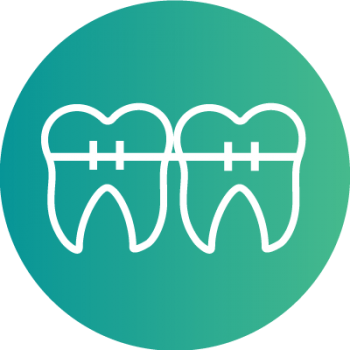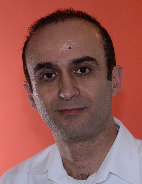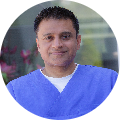
Orthodontics fixed (braces)
All dentists with available appointment times are listed here. Super easy booking with just one click!
Dr. Med. Dent.
Insurances: All Insurances
Address:
Langegasse 65
1080 Vienna
Featured for
- Implantology
- Periodontology
- General Dentistry
-
Implantology
-
Periodontology
- General Dentistry
Medic.Dent., MSc
Insurances: SVS , KFA , Dentist of Choice , Private Practice
Address:
Leonard-Bernstein Straße 8/1/EG6
1220 Vienna
Austria
Show Specialties
- Private Practice Dentist
- Dentist of Choice
- Dental Radiology
- Endodontics
- Periodontology
- Implantology
- Orthodontics removable (braces)
- Orthodontics fixed (braces)
- Prosthodontics
- Oral Surgery
- Prevention
- General Dentistry
Dr.med.dent., Msc
Insurances: ÖGK , SVS , VA , PVA , BVAEB , KFA , Private Practice
Address:
Burggasse 105/2
1070 Vienna
Austria
Show Specialties
- Private Practice Dentist
- Dental Radiology
- Endodontics
- Pediatric Dentistry
- Periodontology
- Implantology
- Orthodontics removable (braces)
- Orthodontics fixed (braces)
- Prosthodontics
- Oral Surgery
- Prevention
- General Dentistry
Dr.med.dent.
Insurances: SVS , KFA , Dentist of Choice , Private Practice
Address:
Südtiroler Platz 7/10
1040 Vienna
Austria
Show Specialties
- Private Practice Dentist
- Dentist of Choice
- Dental Radiology
- Endodontics
- Pediatric Dentistry
- Periodontology
- Implantology
- Orthodontics removable (braces)
- Orthodontics fixed (braces)
- Prosthodontics
- Oral Surgery
- Prevention
- General Dentistry
Insurances: SVS , KFA , Dentist of Choice , Private Practice
Address:
Porzellangasse 27/7A
1090 Vienna
Austria
Show Specialties
- Private Practice Dentist
- Dentist of Choice
- Dental Radiology
- Endodontics
- Pediatric Dentistry
- Periodontology
- Implantology
- Orthodontics removable (braces)
- Orthodontics fixed (braces)
- Prosthodontics
- Oral Surgery
- Prevention
- General Dentistry
Dr. med. dent.
Insurances: Dentist of Choice , Private Practice
Clinic: Aventurin dental practice
Address:
Graben 31 4/11
1010 Vienna
Austria
Show Specialties
- Private Practice Dentist
- Dentist of Choice
- Dental Radiology
- Endodontics
- Pediatric Dentistry
- Periodontology
- Implantology
- Orthodontics removable (braces)
- Orthodontics fixed (braces)
- Prosthodontics
- Prevention
- General Dentistry
Insurances: All Insurances , ÖGK , SVS , BVAEB , KFA
Address:
Zahnarztpraxis Dr. Sablania
Spezialisten- Zahnspange, Implantate
Ordination/ Forsthausgasse 16-20, Stiege 3, EG, 1200 Wien,
Mo - Fr : 10 - 17 Uhr
1200 Vienna
Austria
Show Specialties
- Dental Radiology
- Endodontics
- Pediatric Dentistry
- Periodontology
- Implantology
- Orthodontics removable (braces)
- Orthodontics fixed (braces)
- Prosthodontics
- Oral Surgery
- Prevention
- General Dentistry
Insurances: Dentist of Choice , Private Practice
Clinic: Brilliant Smiles - Dental Aesthetics Center
Address:
Wienerstrasse 17 / 1.01
2351 Wiener Neudorf
Austria
Show Specialties
- Periodontology
- Implantology
- Orthodontics removable (braces)
- Orthodontics fixed (braces)
- Prevention
- General Dentistry
Dr.Dent.Med.
Insurances: Dentist of Choice , Private Practice
Address:
Rögergasse 32/1-3
1090 Vienna
Austria
Show Specialties
- Private Practice Dentist
- Dentist of Choice
- Dental Radiology
- Endodontics
- Pediatric Dentistry
- Periodontology
- Implantology
- Orthodontics removable (braces)
- Orthodontics fixed (braces)
- Prosthodontics
- Oral Surgery
- Prevention
- General Dentistry
What is orthodontics (permanent)?
The field of orthodontics is a specialty in the realm of dental medicine which deals with removable and permanent braces and other kinds of devices intended to correct dental misalignments in children, adolescents, and adults. In the past few years, orthodontic treatments have gained in popularity because an increasing number of people are seeking to "fix" their smiles to not fall behind the aesthetic expectations of the time. Both in private and in professional life, a symmetric smile has become an absolute must. The repair of impediments to chewing and swallowing is also a key reason for orthodontic procedures because, in such cases, they can directly improve patients' lives. Such situations are more common among older patients and may lead to significant and lasting problems unless they are addressed in time. The combination of regular and thorough dental hygiene and targeted orthodontic procedures can significantly improve the functionality of a patient's jaws.To sum up, the main tasks of orthodontics are:
- Improved aesthetic of the denture
- Optimized function of the denture
- Correction of misalignments of teeth and jaws
When do I need an orthodontic treatment?
Nowadays, roughly 40% of all children and adolescents exhibit some form of dental misalignment, many of which end up not being diagnosed or addressed in time. Since the timely recognition and treatment of such misalignments is absolutely key to ensure optimal treatment outcomes, many dentists and orthodontists recommend to their patients to come in for orthodontic check-up visits on a regular basis. A sample schedule for such regular check-ups can look as follows:- For the first time at the age of 4
- At the age of 8
- At the age of 12 and then regularly thereafter
Adherence to this check-up schedule in combination with the timely use of removable retainers for children and adolescents can make the treatment of dental misalignments significantly easier and faster. Should parents, however, delay orthodontic check-ups until after a child's permanent teeth replace the milk teeth (baby teeth), they will most likely have to opt for permanent braces to fully fix any dental misalignments that may manifested.
Orthodontic procedures can also significantly improve the appearance of an adult's smile which is becoming increasingly important on the job nowadays. Therefore, an increasing number of adults is showing interest in so-called invisible braces to fix any lasting dental misalignments that they may not have addressed while they were still growing up.
What kinds of orthodontic treatments with permanent braces (brackets) are there?
Overall, there are 3 types of permanent braces that dentists use to carefully adjust the positions of their patients' teeth:- Self-ligating brackets (Damon brackets): This type of brackets moves crooked teeth into their desired positions quite fast and effortless. Damon brackets are “programmed”. In other words, prior to their insertion, the dentist carefully calculates the exact positions into which he or she would like to move the patient's teeth, picks out the right type of brackets for the job, and mounts them onto the teeth that need to be treated. Advantages of this bracket type are the relatively gentle impact on a patient's jaws, relatively short treatment duration, and quite high success rate. On the flipside, they are also significantly more expensive than conventional braces and retainers and have not yet become a broadly-accepted standard therapy option in most dental practices.
- Ceramic brackets: Since these brackets are of the same color as teeth and have a polished surface, that can not be discolored by foods and drinks, many patients opt for them due to aesthetic reasons.
- Lingual brackets: This type of brackets is mounted on the backside of a patient's teeth and is, hence, virtually invisible. For patients who, for personal or job-related reasons, need a stealthy way to fix dental misalignments, this is the ideal option to go for.
When do I need a dental surgeon?
In cases of significant dental misalignments in one or both of a patient's jaws, even permanent braces may not be enough to fix the issue. In such situations, a dentist may decide to ask an oral surgeon for help and refer the patient on for a more complicated surgical treatment. In such cases, the dental surgeon first determines the optimal place of each of a patient's teeth and then makes all necessary adjustments to the patient's jaws via targeted incisions. After the operation, a follow-up therapy with braces and retainers is then used to put the finishing touches onto the patient's smile.We hope that you found this primer helpful and invite you to take a look at our blog as well as on the retainer and braces landing page for more information.
All the Best & see you soon, Ace!








